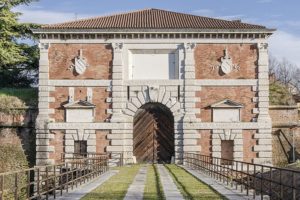Verona’s Gates: a historical itinerary
The city gates are one of Verona’s most important historical testimonies. Verona is an excellent example of a walled city that went through several phases of fortification, a characteristic common to many European cities.
More specifically, over the centuries three different city walls were built to protect Verona: the oldest, from the Roman era; then the one of the “municipal” era, built in the 12th century; and finally the most recent walls, built in the early 14th century by the Lordship of the Scaligeri. The latter was then further renovated in the sixteenth century.
In today’s article we want to walk you through an unconventional itinerary to discover the gates that used to be the actual access points to the city. We will start from the Roman gates that we find particularly fascinating, continuing with three other iconic gates that date back to the following centuries.
Porta Leoni
Porta Leoni opened to the south-east onto the cardo massimo (one of the two main roads in the Roman era). The gate was erected in two different moments: a first phase took place in the first century BC in the Republican era, while the second in the following century, during the reign of Emperor Claudius. The first gate was made of bricks, while the second one was made of white stone.
Nowadays we can only admire its remains, but the gate still preserves its charme.
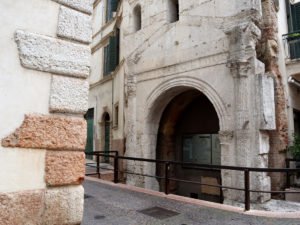
Porta Borsari
This is another valuable find from the Roman era. The original name of Porta Borsari, which opened onto the decumanus maximus (one of the two main roads in the Roman era), was actually Porta Iovia (of Jupiter), in honor of the nearby temple dedicated to Jupiter Lustral.
Made of bricks, the gate was built in the late Republican age with military purpose. Nevertheless, in the 1st century AD, one of the sides of the gate was embellished with a white stone facade, still visible today.
But where does the name Borsari come from? It is said that the Bursarii were a sort of debt or tax collectors who used to stand at the entrance of the gate to tax the merchants entering the city to sell their goods in Piazza delle Erbe.
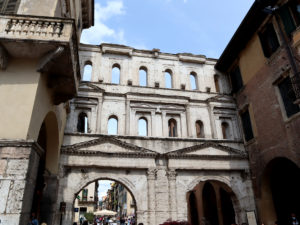
Porta Vescovo
The construction of the original gate dates back to the end of the 13th century. It is said that the name derives from the rights that the Bishop (in Italian, Vescovo) held on the duties collected from the goods entering the city from this gate.
What we see today, however, is the result of enlargements and renovations that took place in the Venetian era, during the sixteenth century. In the Austrian era it was further enlarged, with the addition of the two side passages.
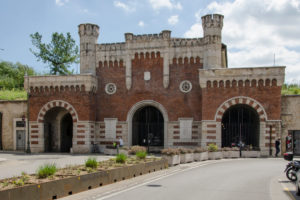
Porta Nuova
This gate, on the southern side of Verona, dates back to the sixteenth century and was built under the direction of the architect Michele Sanmicheli as a reconstruction of the Porta di Santa Croce, built years earlier by the Scaligeri.
In this gate military functionality and artistic value coexist. The highest floor was indeed used to house heavy artillery with long range to defend the city.
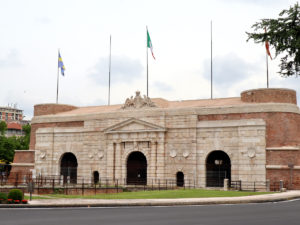
Porta San Zeno
Porta San Zeno was designed by Michele Sanmicheli, too. It was built in a very short time (about a year) and owes its name to the nearby church of San Zeno, the patron saint of Verona.
The peculiarity of Porta San Zeno is that it is still perfectly inserted between the ramparts. In other cases the ramparts have indeed been demolished to make the viability easier.
